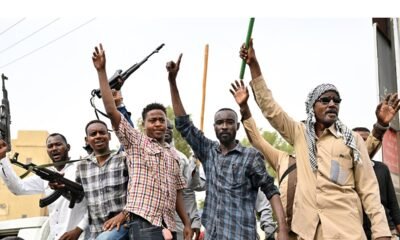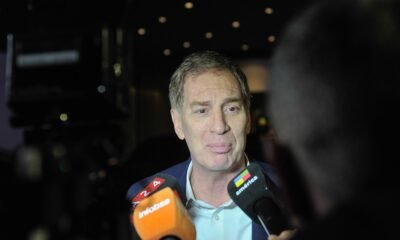INTERNACIONAL
Barrett and Sotomayor tag-team interrogation of Trump lawyer on tariff powers
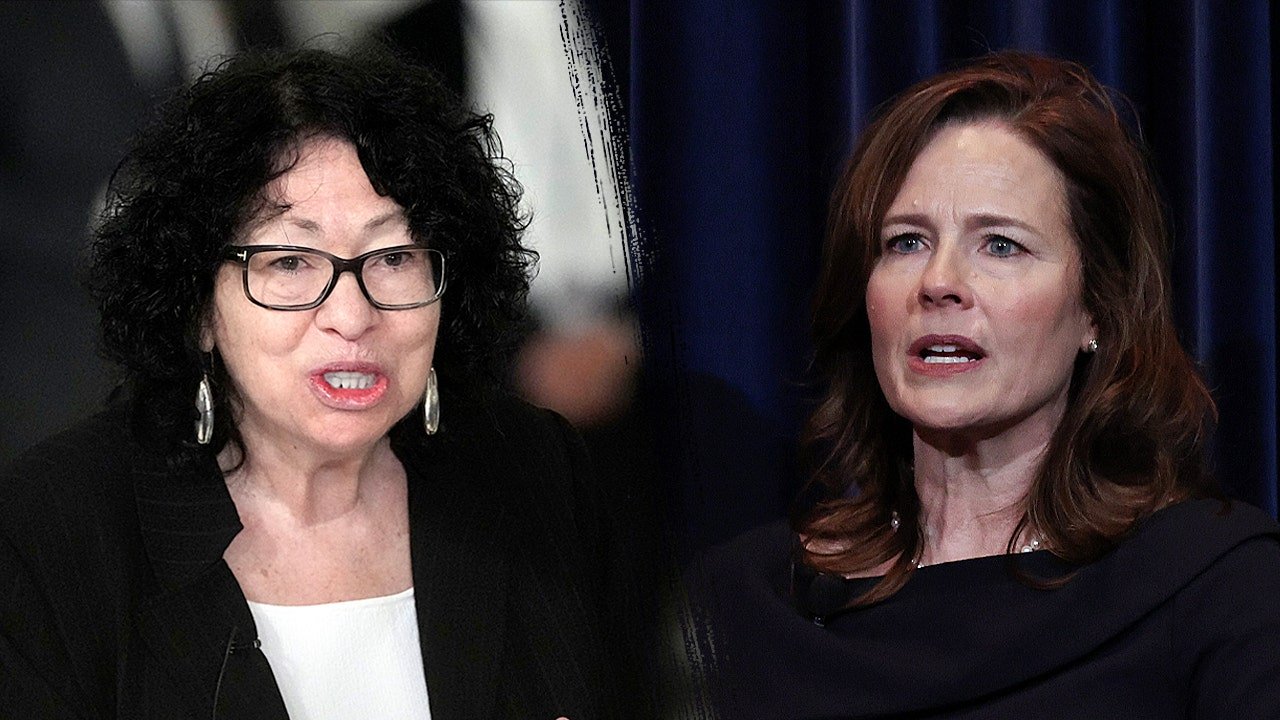
NEWYou can now listen to Fox News articles!
Justice Amy Coney Barrett had pointed questions Wednesday about the law Donald Trump invoked to impose global tariffs, joining several other justices on the right and left in voicing skepticism about the president’s ability to use a tool he has deemed critical to carrying out his economic agenda.
Solicitor General John Sauer repeatedly argued during the lengthy 2½-hour oral arguments that the emergency law Trump used to enact the tariffs for nearly every U.S. trading partner contained language about regulating imports, which Sauer said included using tariffs. The relevant statute permits the president to «regulate … nullify [and] void … importation,» but it does not use the word «tariff.» Barrett pressed Sauer on this point.
«Can you point to any other place in the code or any other time in history where that phrase together, ‘regulate importation,’ has been used to confer tariff-imposing authority?» Barrett, a Trump appointee, asked.
SUPREME COURT PREPARES TO CONFRONT MONUMENTAL CASE OVER TRUMP EXECUTIVE POWER AND TARIFF AUTHORITY
U.S. Supreme Court Associate Justice Amy Coney Barrett speaks at the Ronald Reagan Presidential Library Foundation in Simi Valley, Calif., April 4, 2022. (AP)
Sauer noted one other trade law that had served as a precursor to the emergency law in question, but Barrett appeared unconvinced, repeating her question as Sauer failed to offer direct responses.
Justice Sonia Sotomayor, an Obama appointee, interjected, asking Sauer to «just answer the justice’s question.»
Sotomayor at one point noted that no president has ever used the emergency law, known as the International Emergency Economic Powers Act, to impose tariffs, though Sauer argued that President Richard Nixon’s tariffs were used that way even if the IEEPA did not exist at that stage.
«It’s a congressional power, not a presidential power to tax,» Sotomayor said. «And you want to say tariffs are not taxes. But that’s exactly what they are. They’re generating money from American citizens, revenue.»
The liberal justice noted that Congress has always used the phrase «regulate and tax» together, suggesting that the absence of any mention of tariffs or taxes in a law’s language was deliberate and that Congress purposely did not grant that power to the president.
«Are you telling us that, with respect to its use of ‘regulate’ in other statutes, the taxing reference is superfluous? They didn’t need to do that?» Sotomayor asked.
TRUMP ASKS SUPREME COURT FOR URGENT RULING ON TARIFF POWERS AS ‘STAKES COULD NOT BE HIGHER’
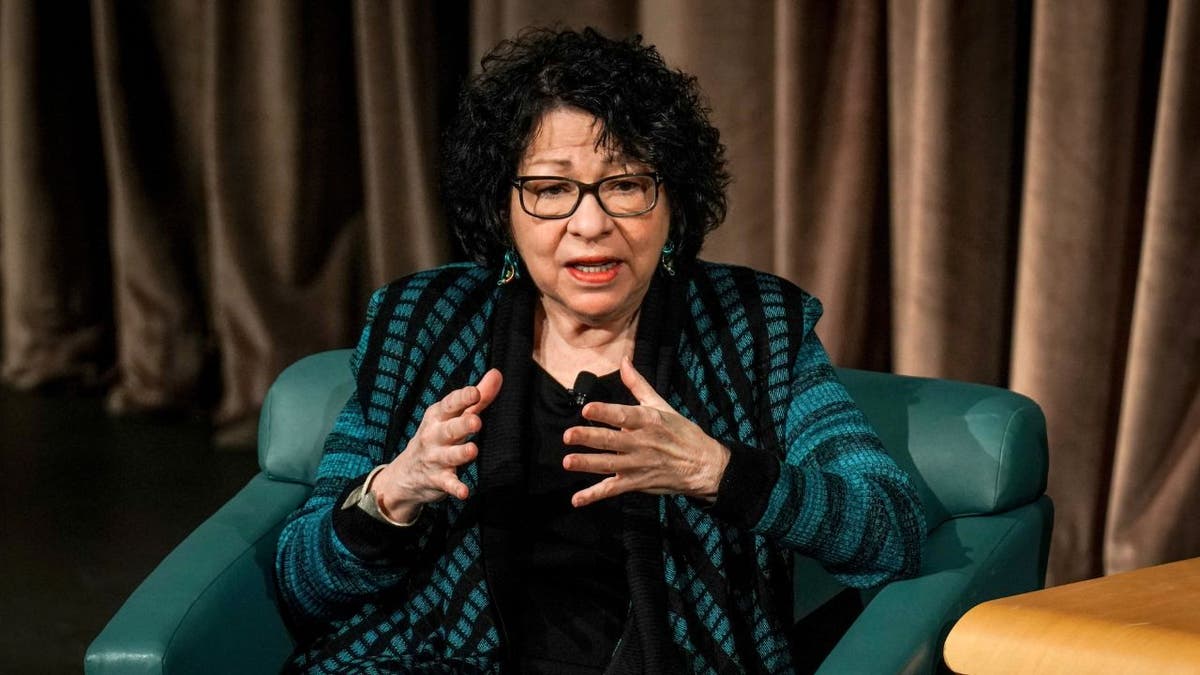
U.S. Supreme Court Justice Sonia Sotomayor appeared on «The View» May 21, 2024. (Jahi Chikwendiu/The Washington Post via Getty Images)
Both Barrett and Sotomayor also drilled down on other verbs in the statute, underscoring the absence of tariff powers.
«To me, things like ‘nullify’ and ‘void’ have definite meanings. I agree with you that ‘regulate’ is a broader term, but those words, I think, are powerful,» Barrett said.
Sotomayor was more blunt, «The verbs that accompany ‘regulate’ have nothing to do with raising revenues in the form of taxes.»
The case has become one of the most closely watched of the term and has presented a novel question to the high court that Trump framed this week as «life or death.»
«Our Stock Market is consistently hitting Record Highs, and our Country has never been more respected than it is right now,» Trump wrote on Truth Social. «A big part of this is the Economic Security created by Tariffs, and the Deals that we have negotiated because of them.»
Sauer told the justices that Trump views the trade deficit and opioid epidemic as «country killing and not sustainable» and that he has chosen to address them by using the IEEPA to impose tariffs. Sauer highlighted the success of the trade agreements Trump has made with top foreign competitors, like China, because of the president’s tariff choices.
«Unwinding those agreements, [Trump] warns, would expose us to ruthless trade retaliation by far more aggressive countries and drive America from strength to failure with ruinous economic and national security consequences,» Sauer said.
Sauer argued the emergency law gives the president the power to regulate importation and that «the power to tariff is a core application of that,» even if not explicitly stated in the law.
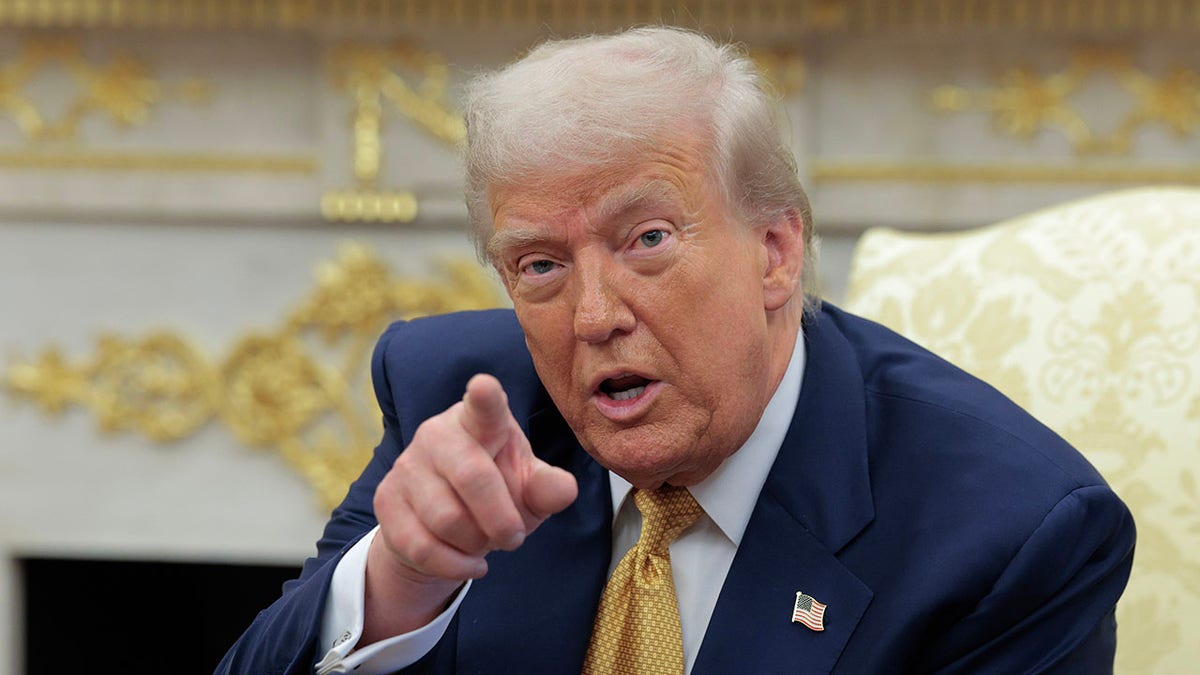
Multiple lower courts struck down the IEEPA-based tariffs implemented by Trump. (Getty Images)
CLICK HERE TO GET THE FOX NEWS APP
In addition to the liberal justices and Barrett, other Republican-appointed justices conveyed skepticism, including Chief Justice John Roberts, who questioned how far presidential emergency powers go under the law.
«The exercise of the power is to impose tariffs, and the statute doesn’t use the word tariffs,» Roberts said.
supreme court,donald trump,trade,judiciary,justice department,economy
INTERNACIONAL
Vladimir Putin ordenó a sus funcionarios iniciar los preparativos para “posibles pruebas nucleares”

El presidente ruso, Vladímir Putin, ordenó este miércoles a sus principales funcionarios estudiar a fondo las intenciones de Estados Unidos y “presentar propuestas” para retomar las pruebas nucleares. La decisión responde a recientes declaraciones del presidente estadounidense, Donald Trump, quien sugirió que Washington podría volver a realizar ensayos atómicos después de treinta años sin hacerlo.
La instrucción de Putin fue emitida durante una reunión del Consejo de Seguridad ruso, donde el mandatario reiteró que Moscú solo retomaría las pruebas si Estados Unidos lo hace primero, pero instó a los ministerios de Defensa y Asuntos Exteriores, así como a otras agencias federales, a recabar información y diseñar un plan de contingencia.
El 30 de octubre, Trump indicó públicamente en redes sociales, desde Corea del Sur, que evalúa la posibilidad de reanudar las pruebas de armas nucleares estadounidenses “en una base igualitaria” con Rusia y China. Sin embargo, el secretario de Energía estadounidense, Chris Wright, aseguró el domingo que los nuevos ensayos ordenados por Trump no contemplan detonaciones nucleares. Estados Unidos no ha realizado explosiones atómicas desde 1992, aunque continúa probando sistemas de armas con capacidad nuclear.

Putin emitió su directriz poco después de que Estados Unidos y Rusia comunicaran avances en el desarrollo y modernización de sus arsenales. La semana anterior, el presidente ruso anunció pruebas exitosas de un misil de crucero y un dron submarino de propulsión nuclear y capacidad atómica, destacando ante su Consejo de Seguridad que esas armas “no pueden ser interceptadas”. Según la visión de Putin, recogida durante el encuentro y reproducida por la agencia estatal TASS, esta demostración pretende dejar claro a Trump la postura firme de Rusia sobre sus demandas en el conflicto de Ucrania.
Durante la sesión del Consejo de Seguridad, el ministro de Defensa, Andrei Belousov, transmitió al presidente que Washington está avanzando en la modernización de su arsenal nuclear. Belousov sostuvo que, junto con un eventual regreso estadounidense a las pruebas nucleares, estas iniciativas “incrementan significativamente el nivel de amenazas militares para Rusia”. Por ello, recomendó iniciar de inmediato los preparativos para posibles pruebas en el archipiélago ártico de Nueva Zembla, donde la extinta Unión Soviética llevó a cabo su último ensayo en 1990. Añadió que esa instalación está en condiciones de reanudar los ensayos rápidamente si es necesario.
El jefe del Estado Mayor ruso, el general Valery Gerasimov, respaldó esa recomendación y advirtió en que preparar un ensayo nuclear puede requerir desde varios meses hasta años, dependiendo del tipo de prueba. En su intervención ante Putin y los altos cargos reunidos, Gerasimov insistió sobre el alto coste de respuesta si no se tomaban medidas preventivas, considerando las señales contradictorias de Washington en torno a futuras explosiones nucleares estadounidenses.
Finalizada la ronda de intervenciones, Putin ordenó a las agencias gubernamentales “reunir información adicional sobre el tema, analizarla en el marco del Consejo de Seguridad y presentar propuestas coordinadas sobre el posible inicio de los trabajos para prepararse para pruebas de armas nucleares.”
El portavoz del Kremlin, Dmitri Peskov, aclaró en declaraciones citadas por la agencia Tass que Putin no ha autorizado iniciar los preparativos para nuevas pruebas, sino únicamente analizar la situación internacional y determinar la necesidad de tomar esa medida. Peskov subrayó que el gobierno ruso debe comprender perfectamente las intenciones de la Casa Blanca antes de avanzar en cualquier decisión.
Horas más tarde, Dmitri Medvédev, vicepresidente del Consejo de Seguridad, intervino en la red social X para recalcar la gravedad de las declaraciones de Trump: “Nadie sabe qué quiso decir Trump con ‘pruebas nucleares’ (probablemente ni él mismo lo sabe). Pero es el presidente de Estados Unidos. Y las consecuencias de tales palabras son ineludibles: Rusia se verá obligada a evaluar la conveniencia de realizar sus propias pruebas nucleares a gran escala”, afirmó Medvédev.
La tensión en torno al Tratado de Prohibición Completa de los Ensayos Nucleares (TPCE) vuelve a quedar en evidencia. El acuerdo, firmado en 1996 por el entonces presidente estadounidense Bill Clinton pero nunca ratificado por el Senado, ha sido respetado en la práctica por todas las potencias atómicas salvo Corea del Norte. En 2023, Putin promulgó una ley que revocó la ratificación rusa del tratado, argumentando que Moscú necesitaba situarse “en igualdad de condiciones” respecto a Washington.
(Con información de AP)
Domestic,Politics,Europe,Government / Politics
INTERNACIONAL
Trump admin ramps up Sudan peace effort as civil war leaves tens of thousands dead
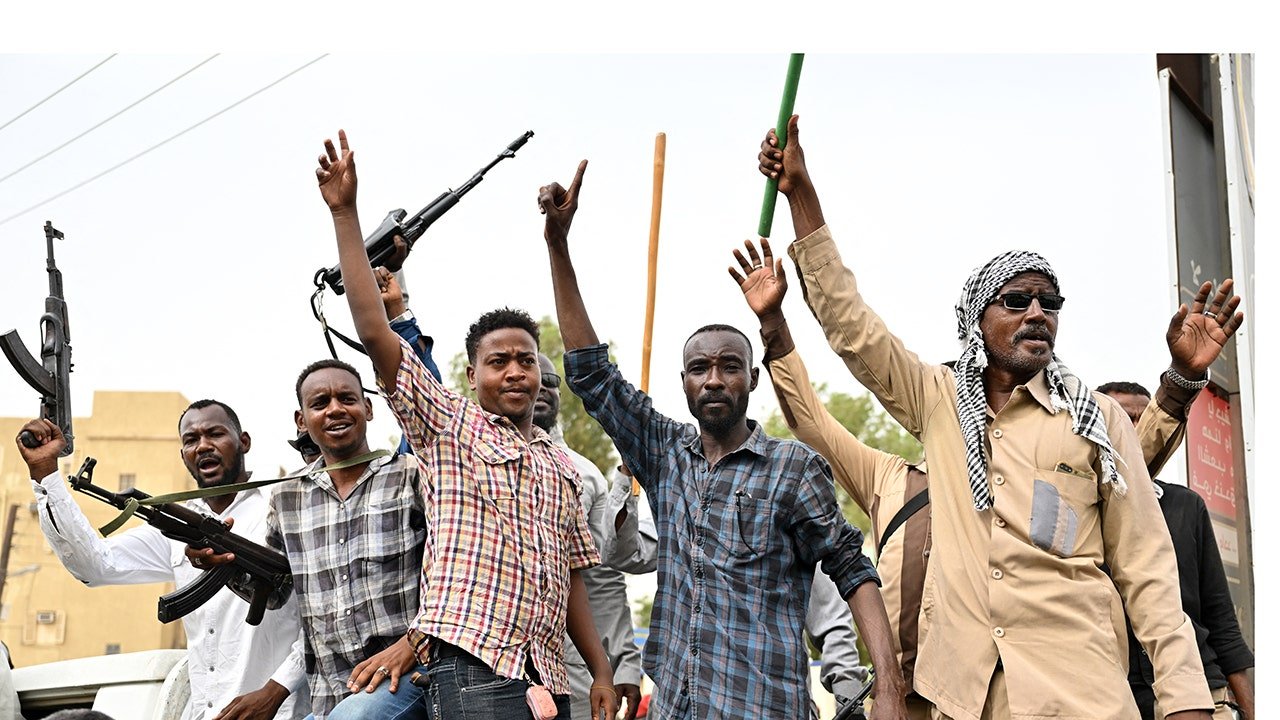
NEWYou can now listen to Fox News articles!
President Donald Trump’s global roller coaster of peace moves — led by him and his team to end wars around the world — is now picking up speed in Sudan, where a 30-month war has left tens of thousands dead, and some 14 million displaced from their homes.
«Ending wars is a priority for President Trump, and the United States remains focused on working with our partners and other stakeholders to resolve the crisis in Sudan,» a State Department spokesperson told Fox News Digital on Wednesday, adding, «Engagement with all relevant stakeholders is essential to achieving this goal. Given the immediate urgency of de-escalating the violence, we will continue to engage with the belligerents to end the conflict.»
Talks to end the fighting between the Rapid Support Forces (RSF) militia, led by Gen. Muhammad Hamdan Dagalo Musa, known as Hemedti, and the Khartoum government’s Sudan Armed Forces (SAF), under the control of Gen. Abdel Fattah al-Burhan, began during the Biden administration but failed to make headway. They have since gained momentum under President Trump, with the U.S. forming a so-called international Quad in September with Egypt, Saudi Arabia and the United Arab Emirates.
‘PEACEMAKER’ TRUMP CAN END AFRICA’S BIGGEST WAR, FORMER WHITE HOUSE ADVISOR SAYS
Sudanese who fled el-Fasher city, after paramilitary Rapid Support Forces (RSF) killed hundreds of people in the western Darfur region, gather at a camp in Tawila, Sudan. (AP Photo/Muhnnad Adam)
Since the weekend, the pace of peace talks has become positively frenetic. The White House’s senior advisor for Arab and African Affairs, Massad Boulos, fresh from brokering a ceasefire in the 30-year war between the Democratic Republic of the Congo and Rwanda, held talks with Egypt’s Foreign Minister Badr Abdelatty in Cairo on Sunday.
On Monday, Boulos met with the Arab League, with the League stating that Trump’s envoy had briefed them on U.S. efforts to «halt the war, expedite aid delivery, and initiate a political process.»
The Sudan Tribune then quoted Boulos as saying later on Monday, «Both parties have agreed in principle, and we have not recorded any initial objection from either side. We are now focusing on the fine details.»
But the two sides are still fighting. On Tuesday, Sudan’s Defense Minister Hassan Kabroun talked to the country’s state television network, following a government council meeting in Khartoum, saying, «We thank the Trump administration for its efforts and proposals to achieve peace,» but added: «Preparations for the Sudanese people’s battle are ongoing. Our preparations for war are a legitimate national right.»

Massad Boulos, senior advisor to President Donald Trump, speaks during an interview with the Associated Press at the United States’ embassy in Cairo, Egypt, Monday, Nov. 3, 2025. (Amr Nabil/AP Photo)
Also on Tuesday, White House Press Secretary Karoline Leavitt weighed in, telling reporters, «The United States is actively engaged in efforts to bring about a peaceful resolution to the terrible conflict in Sudan. We remain committed to working with our international partners, including Quad members — Egypt, Saudi Arabia and the UAE — as well as others to lead a negotiated peace process that addresses both the immediate humanitarian crisis and the longer-term political challenges.»
Leavitt continued, «I actually spoke with Secretary Rubio about this, this morning, as, of course, there’s been, you know, kind of an uptick in recent reporting on the matter. And he assured me that the administration is very much engaged. We’re in pretty frequent communication with those Arab partners that I just mentioned. And we want to see this conflict come to a peaceful end, just as we have with so many others. But it’s — the reality is — it’s a very complicated situation on the ground right now.»
‘GOD HAVE MERCY ON US’: SUDAN’S CHRISTIANS STRUGGLE TO SURVIVE UNDER SIEGE
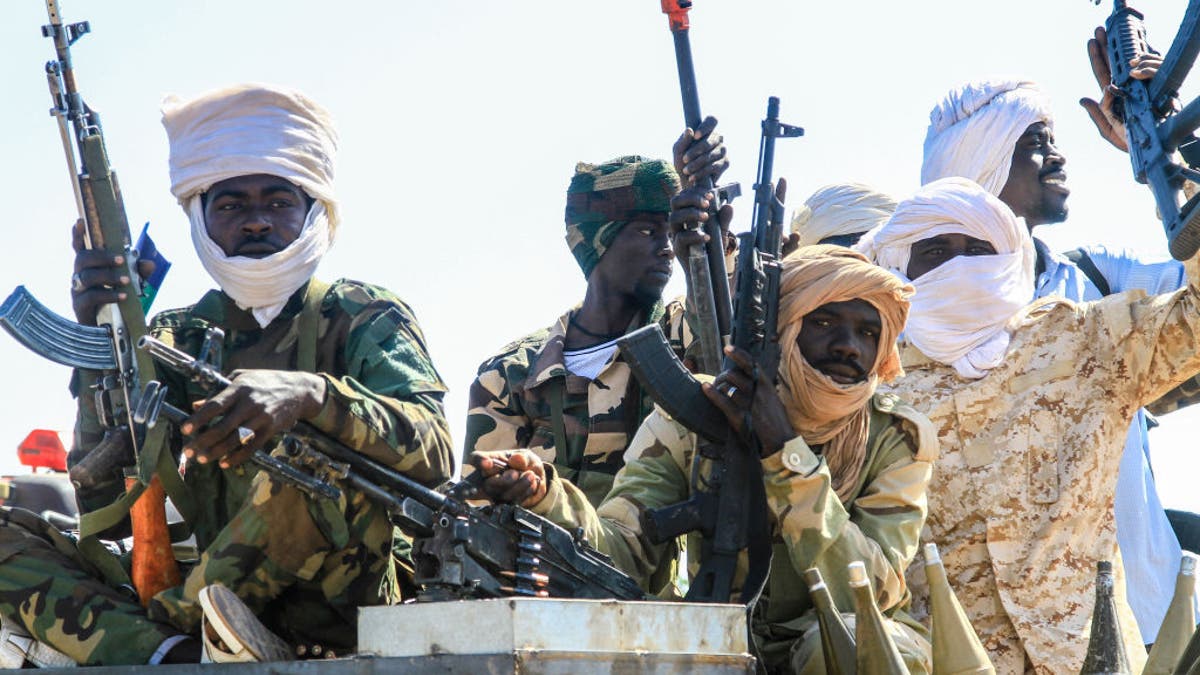
Fighters of the Sudan Liberation Movement, a Sudanese rebel group active in Sudan’s Darfur State which supports army chief Abdel Fattah al-Burhan, attend a graduation ceremony in the southeastern Gedaref state on March 28, 2024. (AFP via Getty Images)
Analysts say last week’s fall of the Sudanese city of El-Fasher, and with it the Darfur region to RSF fighters, effectively cutting the country in two, may have spurred all parties into action. «The RSF’s full control of the Darfur region could have dangerous and worrying consequences in the future in terms of partition,» Boulos told Al Jazeera.
On Tuesday U.N. Secretary General Antonio Guterres called for an immediate ceasefire in Sudan. Speaking on the sidelines of a conference in Qatar, Guterres said the war was «spiraling out of control.»
«The fall of El-Fasher to the RSF is a defining moment in Sudan’s brutal civil war», Mariam Wahba, research analyst at the Foundation for Defense of Democracies (FDD), told Fox News Digital. Wahba continued: «It marks the militia’s full control of the Darfur region and leaves Sudan effectively split in two.»
The human cost is staggering. On Monday, the U.N. reported that «over 21 million people across Sudan are facing high levels of acute food insecurity — the largest such crisis in the world.» The latest Integrated Food Security Phase Classification (IPC) found that famine is ongoing in the now-captured El-Fasher and in Kadugli, South Kordofan, with families trapped and surviving on leaves, animal feed and grass.
‘NO MEANS OF ESCAPE’: SUDANESE REBELS CREATE KILL ZONES AROUND BESIEGED CITY

Yale researchers document evidence of atrocities in Sudan’s El Fasher using satellite imagery. (Humanitarian Research Lab Yale School of Public Health / @Airbus DS 2025)
The Yale School of Public Health’s Humanitarian Research Lab released satellite images taken over El-Fasher over the last week, stating Tuesday, «Evidence of body disposal activities include at least two earth disturbances consistent with mass graves at a mosque and the former Children’s Hospital; there is one new instance of removal of objects consistent with bodies. This activity appears consistent with RSF conducting cleanup of their alleged mass atrocities.»
CLICK HERE TO DOWNLOAD THE FOX NEWS APP
Sources say intense negotiations led by the U.S. team are continuing. Details of what’s on offer have not been revealed, but it’s understood an agreement would start with a three-month humanitarian truce, to allow aid delivery in, followed by a permanent ceasefire and a civilian-led transition.
«For Washington, the stakes in Sudan are rising by the day,» the FDD’s Wahba told Fox News Digital, adding, «The more time the RSF has to cement its control over Darfur and push toward Khartoum again, the harder it will become to prevent the country’s permanent collapse. What happens next in Sudan will shape the balance of power across the Horn of Africa and signal to America’s adversaries whether the United States still has the will to confront instability before it spreads in this critical region of the world.»
africa,donald trump,conflicts,terrorism,state department
INTERNACIONAL
Israel dice que Hamas entregó los restos de otro rehén en Gaza

El ejército israelí dijo el miércoles que Hamas ha entregado restos que se cree que son de un rehén al Comité Internacional de la Cruz Roja en Gaza, el avance más reciente bajo el alto el fuego negociado por Estados Unidos.
El ejército dijo en un comunicado que los restos fueron llevados de regreso a Israel. Hasta antes del anuncio, Hamas había devuelto los restos de 21 rehenes a Israel bajo los términos del alto el fuego que comenzó el 10 de octubre. De confirmarse que se trata de un rehén tras las pruebas forenses, quedarían los restos de otros seis en Gaza.
El anuncio se produjo después de que las operaciones de búsqueda en el barrio de Shijaiya de Ciudad de Gaza descubrieran los restos. Se vio una excavadora con una bandera egipcia ondeando mientras cavaba en un área severamente destruida en Shijaiya, mientras miembros enmascarados del ala militar de Hamás, las Brigadas Qassam, custodiaban el área. También estaban presentes vehículos del Comité Internacional de la Cruz Roja.
Más tarde se vio a milicianos de Hamas dejando el área con varias bolsas en la parte trasera de una camioneta. A finales de octubre, Egipto desplegó un equipo de expertos y equipo pesado para ayudar a buscar los cuerpos de los rehenes.
Hamas ha dicho que la recuperación de cuerpos es complicada por la devastación generalizada en el enclave costero y ha devuelto de uno a tres cuerpos cada pocos días. Israel ha presionado para acelerar las devoluciones y en ciertos casos ha dicho que los restos no eran de rehenes.
Más temprano en el día, Israel devolvió los cuerpos de 15 palestinos más, un día después de que milicianos en Gaza devolvieran el cuerpo de Itay Chen, un soldado israelí muerto en el ataque del 7 de octubre de 2023 que desencadenó la campaña de 2 años de Israel en Gaza. Hasta ahora, Israel ha entregado 285 cuerpos, según la Cruz Roja, la encargada de los intercambios.
Bajo el acuerdo de alto el fuego, Hamas devolvió 20 rehenes vivos a Israel el 13 de octubre. El intercambio adicional de cadáveres es el componente central de la fase inicial del acuerdo negociado por Estados Unidos, que requiere que Hamás devuelva todos los restos de rehenes lo más rápido posible. Los intercambios han continuado a pesar de las acusaciones mutuas de Israel y Hamás de violaciones en otros términos del acuerdo.
Funcionarios israelíes han denunciado partes del proceso como una violación del acuerdo, acusando a Hamas de entregar restos incompletos en algunos casos y de escenificar el descubrimiento de cuerpos en otros.
Hamas ha acusado a Israel de abrir fuego contra civiles y de restringir el flujo de ayuda humanitaria al territorio. El número de víctimas ha disminuido desde que el alto el fuego entró en vigor, pero funcionarios en Gaza han continuado reportando muertes por ataques, mientras que Israel ha dicho que también han muerto soldados en ataques de milicianos.
Funcionarios de salud en Gaza han dicho que identificar los restos entregados por Israel es complicado debido a la falta de kits de pruebas de ADN. Israel no ha revelado cuántos cuerpos retiene o dónde fueron recuperados, pero ha estado entregando 15 cada vez que los restos de un rehén israelí son devueltos desde Gaza.
El acuerdo de alto el fuego no avanzará a fases posteriores hasta que todos los restos de los rehenes israelíes sean devueltos.
Las siguientes partes del plan de 20 puntos llaman a la creación de una fuerza internacional de estabilización. Su composición no se ha concretado, pero los diplomáticos trabajan para definir su papel, persuadir a los países árabes para que participen y obtener un apoyo internacional más amplio.
“Lo que creemos es que cualquier entidad que se cree en Gaza debería tener la legitimidad de un mandato del Consejo de Seguridad”, dijo el secretario general de la ONU, António Guterres, a los periodistas en Doha el martes.
El frágil acuerdo tiene como objetivo reducir la guerra desencadenada por el ataque liderado por Hamás en el sur de Israel que mató a unas 1.200 personas y vio a 251 tomadas como rehenes.
Israel respondió con una ofensiva militar a gran escala que ha matado a más de 68.800 palestinos en Gaza, según el Ministerio de Salud de Gaza. El ministerio, parte del gobierno dirigido por Hamas y compuesto por profesionales médicos, mantiene registros detallados que son considerados generalmente confiables por expertos independientes.
Israel, que ha negado las acusaciones de un comité de investigación de la ONU y otros sobre que comete genocidio en Gaza, ha disputado las cifras del ministerio sin proporcionar un conteo alternativo.

 POLITICA2 días ago
POLITICA2 días agoKicillof quiere declarar en emergencia económica a la provincia y pide autorización para tomar más deuda

 POLITICA3 días ago
POLITICA3 días ago“Haré lo que tenga que hacer para lograr las reformas”: el primer mensaje de Santilli tras ser designado ministro del Interior

 CHIMENTOS3 días ago
CHIMENTOS3 días agoLaura Ubfal confirmó quién amenazó de muerte a Juanita Tinelli: «Es un conocido de…»



